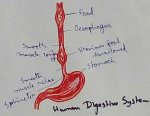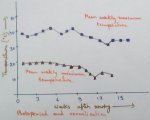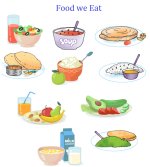Worksheet on What Plants can do
Worksheet on what plants can do for us contains the different types of questions on what does plants gives us?
Read the concept to answers the questions on what plants can do.
1. Which group contains on Underground plant parts that are eaten?
(i) Onion, garlic, ginger
(ii) Potato, carrot, tomato
(iii) Onion, potato, brinjal
(iv) Brinjal, tomato, carrot
2. Which of the following has not been correctly matched?
(i) Mustard seeds cooking oil
(ii) Tulsi leaves chocolate
(iii) Neem leaves medicine
(iv) Cotton bolls cloth
3. A tiger eats only other animals. It is an example of:
(i) Herbivore
(ii) Carnivore
(iii) Omnivore
(iv) Vegetarian
4. Fill in the blanks:
(i) Where does the plant make its food?
(ii) Name the three things a plant needs to make its food.
(iii) Where does a plant get carbon dioxide from?
(iv) How does water reach the leaf?
(v) Can a plant make its food at night? Why?
(vi) What goes out of the leaf into the air?
(vii) If the leaf becomes brown and dry, can it still make food?
5. Compete the following:
Plant products Name of plant Parts of plant used
tea tea bush leaves
cooking oil mustard plant __________
__________ cocoa plant beans
sugar sugar cane __________
cough medicine tulsi __________
6. Which of the following words are ‘made from plants’ and ‘not made from plants’:
fresh lime juice, silver chain, cement pot, mango milk-shake, fruit-chaat, paper plate, plastic mug, cotton T-shirt, sewing thread, jute bag, lock and key, betel-nut:
7. Put a tick (√) against the correct sentences.
(i) A plant can make its food in the dark.
(ii) Animals eat plants.
(iii) Some animals also eat other animals.
(iv) Plants must have water to make their food.
(v) Animals can also make their own food.
(vi) Plants store food in their seeds.
(vii) New plants grow from seeds.
(viii) Plants take in oxygen from the ground through their roots.
Check the answers of worksheet on what plants can do:
Answers:
From Worksheet on What Plants can do to HOME PAGE
Recent Articles
-
Eleventh Grade | Eleventh Grade Science | Eleventh Grade Math
Jun 27, 25 12:26 AM
Eleventh grade biology has been designed in accordance with the recommended topics. We will cover all the topics in biology very exciting and interesting way. -
Explain Digestion of Food | Salivary Glands | Oesophagus | Stomach
Jun 27, 25 12:20 AM
Before the digestion is start by the different enzymes secreted from the different digestive glands food must be turned and chut or mixed with saliva inside the mouth. -
Explain Human Digestive System | Mouth | Tongue | Pharynx | Teeth
Jun 21, 25 01:15 PM
Digestive system is a system of alimentary canal and digestive glands. Alimentary canal- alimentary canal is a tube of variable diameter having muscular wall and glandular epithelial tissues which sta… -
Vernalisation in Plants | Definition | Mechanism | Devernalization |
Jun 18, 25 01:34 PM
Definition of vernalisation- The change of flowering habit due to the low temperature treatment is known as vernalisation. This is a physiological process which was denoted by Clipart in 1857 invite b… -
The Food We Eat | Food we Get from Plants and Animals | Carbohydrates
Jun 15, 25 03:20 PM
What are the food that we should eat? Find out the names of ten food items in the word maze. Write the names in the correct column of the table given below. Food we get from plants Food we get from an…




New! Comments
Have your say about what you just read! Leave me a comment in the box below.